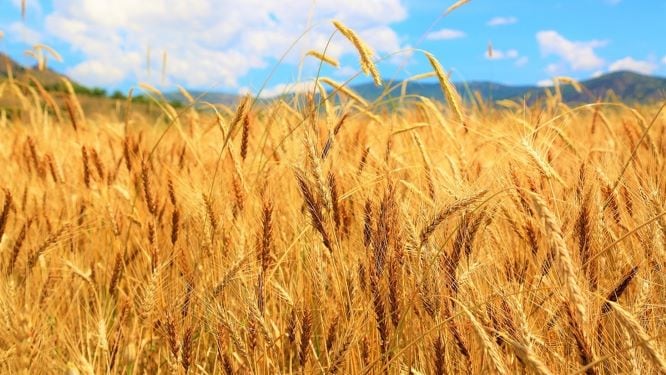Food and Beverage
Tradition Coming from Centuries Ago: Wheat
The use of starch, the most important compound of wheat, which has vital importance in the history of civilization, dates back to the pre-dynastic period of the Egyptians. During this period, starch obtained from wheat was first used as an adhesive to bond papyrus papers. The scientific writing of the starch production process was carried out by the Roman statesman Marcus Porcius Cato (Sage Cato), who lived between 234-149 BC. Wheat starch production in the middle ages became an important industry in the Netherlands, and for a long time, it was considered to be of high quality. The first form of starch modification applied in this period emerged as a result of the hydrolysis of starch with vinegar.

Wheat, known as the symbol of fertility for centuries, is one of the basic food sources in the world. Especially in Anatolian lands; it is not just a plant, but an integral part of our culture, it has become our tradition. These lands, known as “granary”, are now home to 23 wild wheat types and more than 400 cultivated wheat varieties. Even The Upper Mesopotamia Region (Southeastern Anatolia Region), also called “Fertile Crescent”, has passed into the history of civilization as the geography here wheat was domesticated for the first time and spread to the world.
The use of starch, the most important compound of wheat, which has vital importance in the history of civilization, dates back to the pre-dynastic period of the Egyptians. During this period, starch obtained from wheat was first used as an adhesive to bond papyrus papers. The scientific writing of the starch production process was carried out by the Roman statesman Marcus Porcius Cato (Sage Cato), who lived between 234-149 BC.
Wheat starch production in the middle ages became an important industry in the Netherlands, and for a long time, it was considered to be of high quality. The first form of starch modification applied in this period emerged as a result of the hydrolysis of starch with vinegar.
The 19th century has witnessed tremendous development in the starch industry with the demands of the mostly textile, color printing, and paper industries and the discovery that starch can be easily converted into a gum-like product known as dextrin. Starch; in addition to sweetener and ethanol production, it is also used as a laundry starch because it provides more hardness to the laundry at low temperatures. Starch as everyone knows; since no chemicals are needed in its production, it is also preferred in the production of bakery products.
How Should an Ideal Starch Be?
Undoubtedly, every producer expects minimum cost in addition to obtaining maximum efficiency. Of course, these two elements alone are not enough for an ideal starch production. We can list all the elements as follows:
- High gluten yield together with high gluten quality.
- High starch yield with high starch quality.
- Low power consumption
- Low water consumption.
- Economical and effective wastewater treatment.
- Longer working time with less service requirement.
Polat Makina Continues to Offer Solutions for Needs
Polat Makina; while providing solutions for the starch industry for years with its 2 and 3 phase decanters is your greatest assistant in achieving desired efficiency and performance.
Polat Makina; as it works one-on-one with its customers, it analyzes the difficulties and expectations they face in the best way and ensures that they achieve success regardless of their goals.
Article Archive